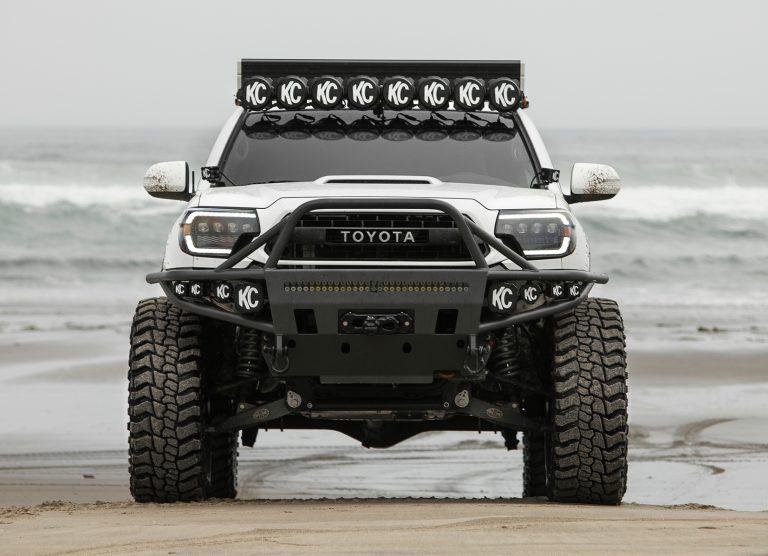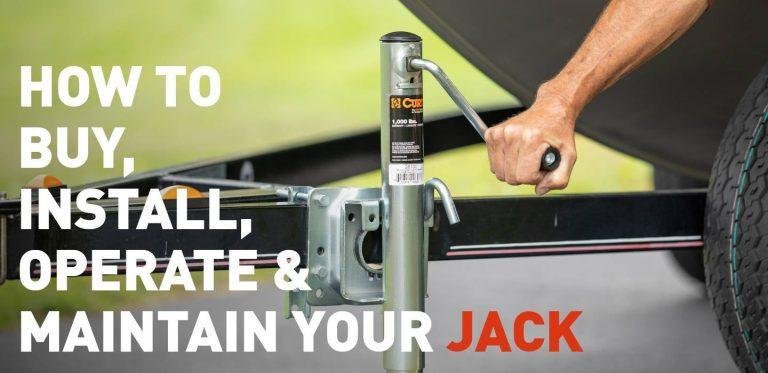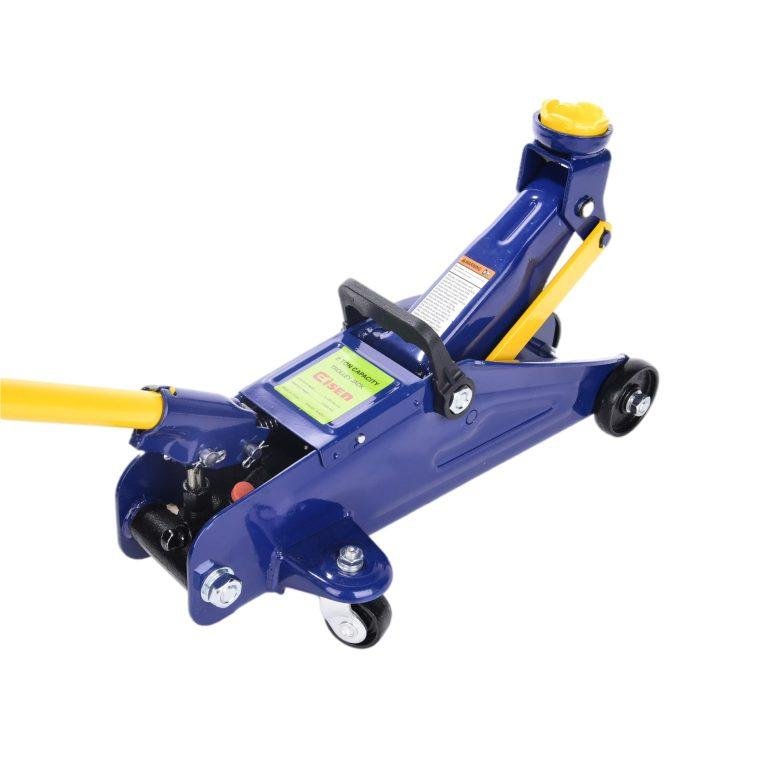Yes, 2 post lifts are generally safe for use. 2 post lifts are a safe option for lifting vehicles, commonly used in automotive repair shops and garages.
These lifts are designed with multiple safety features such as hydraulic locks and safety bars to prevent accidents and ensure stability while lifting cars. The lifts also undergo rigorous testing and certification processes to meet industry safety standards. With proper installation, regular maintenance, and following safety guidelines, 2 post lifts can provide a secure and efficient way to lift vehicles for maintenance and repairs.
However, it is essential to choose a reputable manufacturer and ensure the lifts are operated by trained professionals to ensure optimal safety.

Credit: solidstarts.com
Understanding The Mechanics Of 2 Post Lifts
Two post lifts are a secure option for lifting vehicles. They function by utilizing two columns and offer stability and efficiency for automotive maintenance.
Many car enthusiasts and professionals in the automotive industry often wonder about the safety of 2 post lifts. These hydraulic lifts are commonly used in garages and vehicle service centers to raise cars for maintenance and repairs. Understanding the mechanics of 2 post lifts is essential to assess their safety and efficacy.
In this section, we will delve into how these lifts work, explore their key components, and discuss the advantages of using them.
How Do 2 Post Lifts Work?
- Two post lifts are designed with a simple yet effective mechanism that allows for easy and secure lifting of vehicles.
- These lifts consist of two vertical posts that are anchored to the floor and connected by a horizontal crossbeam.
- By positioning the vehicle’s lifting points securely on arm pads or rubber blocks, the car is lifted off the ground when the hydraulic pump system is activated.
- The hydraulic cylinders, located within the posts, extend to raise the lift arms and lift the vehicle to the desired height.
- Once the vehicle is raised, it can be accessed from underneath for repairs or maintenance.
Key Components Of A 2 Post Lift
- Hydraulic pump system: 2 post lifts utilize a hydraulic pump system that provides the necessary power to raise and lower the lift arms.
- Hydraulic cylinders: These cylinders are responsible for extending and retracting the lift arms, allowing for vertical movement.
- Lift arms: The lift arms are attached to the hydraulic cylinders and lift the vehicle when the pump system is activated.
- Safety features: Modern 2 post lifts are equipped with various safety features, such as safety locks, arm restraints, and slack cable detection systems. These features ensure stability and prevent accidents during operation.
- Anchoring system: The anchoring system ensures that the lift remains securely fixed to the floor, providing stability and safety during lifting operations.
The Advantages Of Using 2 Post Lifts
- Versatility: 2 post lifts are highly versatile and can accommodate a wide range of vehicles, from cars and suvs to light trucks.
- Space-saving: These lifts occupy minimal floor space compared to other types of lifts, making them ideal for garage owners with limited space.
- Convenient access: By lifting the vehicle off the ground, 2 post lifts provide easy access to the undercarriage, making repairs and maintenance tasks more convenient.
- Cost-effective: Compared to other types of lifts, 2 post lifts are generally more affordable, making them a cost-effective choice for small businesses and individual users.
- Time-saving: With the ability to quickly raise and lower vehicles, 2 post lifts can significantly reduce the time required for mechanical tasks, improving efficiency.
Understanding the mechanics of 2 post lifts is crucial to evaluate their safety and effectiveness. These lifts operate through a straightforward yet robust system and offer several advantages, including versatility, space-saving design, convenient access, cost-effectiveness, and time-saving capabilities. Whether you’re a professional in the automotive industry or a passionate car enthusiast, 2 post lifts can be a valuable investment for your workspace or garage.
Are 2 Post Lifts Safe And Reliable?
2 post lifts are known for their safety and reliability, making them a trusted choice for lifting vehicles. With advanced features and sturdy construction, these lifts ensure a secure and dependable lifting experience. Whether it’s for maintenance or repairs, you can rely on 2 post lifts to provide a safe working environment.
If you’re considering installing a 2 post lift in your garage or workshop, one of the many questions that may be on your mind is: are 2 post lifts safe and reliable? It’s essential to have a clear understanding of the safety features, misconceptions, and weight limits associated with these lifts before making a decision.
In this section, we will delve into these aspects to help you make an informed choice.
Examining The Safety Features Of 2 Post Lifts:
When it comes to the safety of 2 post lifts, manufacturers have implemented various features to ensure the user’s security. Some of the safety features that are typically found in these lifts include:
- Strong and durable construction: 2 post lifts are built using high-quality materials, providing a sturdy foundation for lifting vehicles.
- Safety locks: Most 2 post lifts come equipped with safety locks that engage automatically to support and secure the vehicle in place during maintenance or storage.
- Safety latches: These latches prevent any accidental lowering of the lift arms and provide additional security.
- Overload protection: Many lifts have built-in mechanisms to prevent overloading and ensure that the weight capacity is not exceeded.
- Safety cables: These cables act as a secondary safety feature by preventing sudden drops in the event of a failure in the primary lifting mechanism.
Common Misconceptions And Myths About 2 Post Lifts:
There are several misconceptions floating around about the safety of 2 post lifts. Let’s debunk some of the most common myths:
- Myth: 2 post lifts are prone to collapse. Reality: when properly installed and maintained, 2 post lifts are designed to withstand the weight of vehicles and provide a safe working environment.
- Myth: Using a 2 post lift is dangerous. Reality: with the correct understanding of safety protocols and adherence to manufacturer guidelines, using a 2 post lift can be safe and efficient.
- Myth: 2 post lifts are unstable. Reality: these lifts are engineered to distribute weight evenly and provide stability during operation. The safety features further enhance their stability.
Understanding The Load Capacity And Weight Limits:
To ensure the safe use of 2 post lifts, it is crucial to understand their load capacity and weight limits. Here are a few key points to consider:
- Load capacity: Each lift has a specific load capacity which indicates the maximum weight it can support. It is essential to choose a lift that matches the weight of the vehicles you intend to lift.
- Weight limits: It’s important to adhere to the weight limits specified by the lift manufacturer. Exceeding these limits can compromise the lift’s stability and safety features.
2 post lifts can be safe and reliable tools for vehicle maintenance and storage. By examining their safety features, debunking common myths, and understanding their load capacity and weight limits, you can confidently decide whether a 2 post lift is suitable for your needs.
Remember to always prioritize safety and follow the manufacturer’s guidelines for proper use and maintenance.
Preparing Your Workspace For Safe 2 Post Lift Operation
Ensure a safe 2 post lift operation by preparing your workspace properly. Follow these guidelines to create a secure environment for efficient and accident-free work.
Assessing The Structural Integrity Of Your Garage Or Workspace
- Take a close look at the structure of your garage or workspace to ensure it can safely support the weight and movement of a 2 post lift.
- Check for any signs of damage or instability, such as cracks, sagging, or weak spots.
- Ensure that the floor is smooth, level, and capable of bearing the weight of the lift.
- If you have any doubts about the structural integrity, consult with a professional before proceeding.
Essential Safety Equipment And Accessories
- Invest in safety equipment such as safety glasses, gloves, and ear protection to protect yourself during lift operation.
- Make sure you have a fire extinguisher nearby in case of emergencies.
- Use wheel chocks to prevent the vehicle from rolling while on the lift.
- Consider using safety lock bars or arm restraints to provide extra security during maintenance work.
- Keep a first aid kit on hand in case of any minor injuries.
Proper Positioning And Installation Of The Lift
- Carefully position the lift in your workspace, ensuring that it has enough space to fully extend without obstruction.
- Follow the manufacturer’s instructions when installing the lift, ensuring that it is securely anchored to the ground.
- Check that the lift is level before using it to prevent any accidents or damage.
- Make sure the lift’s hydraulic system, cables, and safety locks are in good working condition before operation.
- Regularly inspect and maintain the lift to ensure its continued safe operation.
Remember, taking the time to properly assess your workspace, acquire the necessary safety equipment, and install the lift correctly can help ensure a safe and efficient work environment. Stay vigilant and prioritize your safety at all times when using a 2 post lift.
Carrying Out 2 Post Lift Inspections And Maintenance
Carrying out regular inspections and maintenance on 2 post lifts is crucial for ensuring their safety and functionality. By properly maintaining these lifts, you can minimize the risk of accidents and promote a safe working environment.
Regular inspection checklist for 2 post lifts:
- Check the lift structure for any signs of damage or rust.
- Inspect the lift arms and lock mechanisms to ensure they are in good working condition.
- Examine the lifting pads for wear and tear, making sure they are properly positioned and secure.
- Verify that the hydraulic system is functioning correctly and there are no leaks.
- Inspect the cables and chains for any signs of fraying or stretching.
- Check the safety locks and release mechanisms for proper operation.
- Ensure that all electrical components, such as the motor and control panel, are in working order.
Identifying signs of wear and tear:
- Look for any cracks or corrosion on the lift arms or base.
- Pay attention to unusual noises or vibrations during operation.
- Check for excessive play or movement in the lift arms and lock mechanisms.
- Monitor the condition of the lifting pads and replace them if they are worn out.
- Examine the hydraulic system for any fluid leaks or reduced performance.
- Inspect the cables and chains for signs of stretching or damage.
Lubrication and maintenance guidelines for optimum safety:
- Regularly lubricate all moving parts, such as the lift arms, lock mechanisms, and cables, using a suitable lubricant.
- Clean the lifting pads and ensure they are free from debris or oil buildup.
- Check and adjust the tension of the lifting cables or chains as recommended by the manufacturer.
- Inspect all electrical connections and wiring for any signs of damage or looseness.
- Keep the lift area clean and free from any obstacles or hazards.
Safe Operating Procedures For 2 Post Lifts
2 post lifts are safe to use when operating according to the appropriate procedures. By following the recommended guidelines, such as ensuring proper placement of the lifting pads and regularly inspecting the lift for any signs of wear or damage, users can minimize the risk of accidents and safely lift vehicles.
Operating 2 post lifts can be a safe and efficient way to lift and lower vehicles, but it’s essential to follow strict safety guidelines to prevent accidents and injuries. By adhering to proper operating procedures, you can ensure a secure working environment for yourself and others.
Below, we provide a step-by-step guide for lifting and lowering vehicles, safety precautions during vehicle positioning, and tips to prevent accidents and injuries.
Step-By-Step Guide For Lifting And Lowering Vehicles:
- Before lifting a vehicle, ensure that the lift is on a level surface and properly anchored to the ground.
- Examine the lift for any signs of damage, such as bent or worn components. If any issues are found, refrain from using the lift until necessary repairs have been made.
- Position the lifting pads or arms securely on the vehicle’s designated lifting points, following the manufacturer’s instructions.
- Slowly raise the lift by activating the hydraulic pump. Keep a close eye on the vehicle as it ascends to ensure it remains stable and balanced.
- Once the desired height is reached, ensure that the automatic locks engage properly to hold the vehicle securely in place.
- Conduct any required maintenance or repairs on the vehicle while it is elevated. Remember to use appropriate safety precautions, such as wheel chocks, to prevent accidental movement.
- When ready to lower the vehicle, double-check that the area beneath the lift is clear before releasing the locks.
- Gradually release the hydraulic pressure to slowly lower the vehicle back to the ground. Monitor the descent closely to ensure the vehicle lands safely on all four wheels.
- Finally, check for any signs of damage or instability before moving the vehicle off the lift.
Safety Precautions During Vehicle Positioning:
- Always position the vehicle centrally between the lifting arms or pads to distribute the weight evenly.
- Ensure that the vehicle’s wheels are straight and parallel to prevent sideways movement.
- Avoid exceeding the lift’s maximum weight capacity, as it can lead to equipment failure and dangerous situations. Refer to the manufacturer’s guidelines for weight limitations.
- Keep the work area clear of any obstructions or hazards that could interfere with the positioning of the vehicle.
- Communicate with colleagues or team members to ensure proper coordination during vehicle positioning, particularly when using multiple lifts in the same area.
Tips For Preventing Accidents And Injuries:
- Provide proper training to all operators on the correct procedures for using 2 post lifts, emphasizing safety protocols and potential risks.
- Conduct regular inspections and maintenance on the lift equipment to ensure it remains in optimal working condition.
- Establish clear guidelines and protocols for reporting and addressing any lift malfunctions or safety concerns.
- Encourage the use of personal protective equipment, such as gloves and safety glasses, to mitigate the risk of accidents or injuries.
- Maintain a clean and organized workspace to minimize trip hazards and facilitate safe movement around the lift area.
By following these safe operating procedures, you can ensure that 2 post lifts are used without compromising the well-being of operators and vehicles. Remember, prioritizing safety should always be the top priority in any automotive workshop or garage.
Training And Certification For Using 2 Post Lifts
Training and certification for using 2 post lifts ensures safe operation and maintenance practices. Gain the necessary skills to prevent accidents and ensure the overall safety of the equipment and personnel involved.
Importance Of Proper Training And Certification
Proper training and certification are crucial when it comes to using 2 post lifts safely. Working with these powerful machines requires a certain level of expertise to minimize the risk of accidents and ensure the well-being of both the user and the vehicle being lifted.
- Training:
- It is essential to undergo comprehensive training on how to operate 2 post lifts correctly. This includes understanding the different components of the lift, how to properly position the vehicle, and the safe use of controls.
- The training should cover important safety protocols to follow, such as weight limits, center of gravity calculations, and proper locking procedures.
- Knowledge of recognizing potential hazards and how to handle emergency situations should also be included in the training program.
- Certification:
- After completing the training, it is necessary to obtain proper certification to demonstrate competency in using 2 post lifts. Certification ensures that technicians have met specific industry standards and possess the necessary skills to operate the equipment safely.
- Some reputable organizations offer certification programs specifically for automotive lift operators. These certifications often require passing written and practical exams to verify knowledge and practical application.
Resources For Acquiring Necessary Skills And Knowledge
To acquire the necessary skills and knowledge for operating 2 post lifts safely, various resources are available. These resources are designed to provide comprehensive training and educational materials to professionals in the automotive industry.
- Manufacturer training programs:
- Many lift manufacturers offer training programs that cover the specific features and operation of their lifts. These programs often provide in-depth training on installation, maintenance, and safe operation.
- Manufacturer training programs are ideal because they are tailored to the equipment they produce, ensuring technicians receive specific knowledge about the lifts they will be working with.
- Industry associations:
- Joining industry associations, such as the automotive lift institute (ali), can provide access to valuable resources and educational materials. Ali offers training programs, safety guidelines, and lift inspector certification courses.
- Industry associations often have networking opportunities, allowing professionals to connect with experienced lift operators and share knowledge.
- Online training courses:
- Online courses offer flexibility and convenience when it comes to acquiring skills and knowledge for operating 2 post lifts. There are various platforms that provide detailed training modules, videos, and quizzes suitable for both beginners and experienced lift operators.
- These online resources typically cover essential topics such as safety procedures, proper maintenance, and troubleshooting common issues that may arise while using 2 post lifts.
Continuous Education And Updates In The Industry
The automotive industry is continuously evolving, and staying up-to-date with the latest trends and safety regulations is vital for those who operate 2 post lifts. Continuous education ensures that professionals have the necessary knowledge and skills to stay safe and efficient in their work.
- Ongoing training:
- Participating in regular training sessions, workshops, and seminars can help professionals stay updated with the latest practices in lift operation and safety. This allows them to enhance their skills and knowledge continuously.
- Ongoing training programs also serve as refreshers to reinforce proper techniques and emphasize the importance of following safety guidelines.
- Industry publications and websites:
- Regularly reading industry publications and websites dedicated to automotive lifts is an excellent way to stay informed about the latest updates, technological advancements, and safety guidelines.
- These resources often provide valuable insights, expert advice, and case studies that can help professionals enhance their understanding and improve their practices.
- Collaboration and networking:
- Engaging in industry events and networking with other professionals in the field can provide opportunities to learn from others’ experiences. Collaborating with peers, sharing knowledge, and discussing best practices can contribute to continuous improvement and staying informed about the industry.
Remember, training and certification are essential for safe and effective operation of 2 post lifts. By utilizing available resources and staying up-to-date with industry updates, professionals can ensure a high level of competence and prioritize the safety of all involved.
Identifying Potential Hazards And Mitigating Risks
2 post lifts are a safe option for automotive workshops and garages. They offer stability, ease of use, and efficient vehicle maintenance, making them a reliable choice for identifying and mitigating potential hazards and risks. Choose a 2 post lift that meets safety standards for optimum performance.
Are 2 Post Lifts Safe?
If you’re considering using a 2 post lift, you may have safety concerns. While these lifting devices are commonly used in garages and automotive shops, it’s important to understand the potential hazards associated with them. By identifying these risks and implementing proper safety measures, you can ensure the safe operation of your 2 post lift.
In this section, we will discuss common hazards, safety measures for specific scenarios, and how to handle emergency situations and accidents.
Understanding Common Hazards Associated With 2 Post Lifts:
- Uneven load distribution: Improperly balanced loads can cause the lift to become unstable, leading to accidents.
- Vehicle weight capacity: Exceeding the weight limit of the lift can put undue stress on the equipment, compromising its stability.
- Vehicle damage: Inadequate positioning or securing of the vehicle on the lift can result in damage to the vehicle and potential injury to workers.
- Mechanical failure: Faulty components or insufficient maintenance can lead to equipment malfunction, causing accidents.
Implementing Safety Measures For Specific Scenarios:
- Load capacity awareness: Always check and adhere to the manufacturer’s weight capacity recommendations.
- Proper weight distribution: Ensure that the load is evenly distributed on the lifting arms to maintain balance.
- Secure vehicle positioning: Use wheel chocks and properly position and secure the vehicle on the lift to minimize the risk of accidents.
- Regular maintenance and inspections: Perform routine checks on the lift to identify any potential mechanical issues and address them promptly.
Dealing With Emergency Situations And Accidents:
- Operator training: Prioritize proper training for all individuals using the 2 post lift to ensure they are familiar with emergency procedures.
- Emergency stop functionality: Familiarize yourself with the location and operation of the emergency stop button on the lift and make sure it is in working condition.
- Clear evacuation paths: Ensure that there are unobstructed paths for individuals to safely exit the area in the event of an emergency.
- First-aid preparedness: Have a fully stocked first-aid kit readily available and ensure that designated individuals are trained in administering basic first-aid.
By understanding the common hazards associated with 2 post lifts, implementing safety measures for specific scenarios, and being prepared to handle emergencies, you can greatly reduce the risk of accidents and ensure the safe use of these lifting devices. Remember to prioritize regular maintenance, proper training, and a focus on safety to create a secure working environment for all.
Reviews And Recommendations For Safe 2 Post Lifts
Reviews and recommendations for safe 2 post lifts: discover the safety of 2 post lifts through authentic reviews and expert recommendations. Opinions from professionals and users will help you make an informed decision about their safety.
Top-Rated 2 Post Lifts For Safety And Reliability:
- Bendpak xpr-10as-lp: This 2 post lift is highly regarded for its safety features, including an automatic safety lock system and a heavy-duty lifting capacity of 10,000 pounds. It also comes with adjustable arms and a dual-synchro equalization system for added stability.
- Rotary lift spoa10: The rotary lift spoa10 is known for its durability and safety. It features a single lock release lever for quick and easy operation, as well as an automatic arm restraint system. It can lift up to 10,000 pounds and has a wide drive-thru.
- Challenger lifts 44018: With a lifting capacity of 18,000 pounds, the challenger lifts 44018 is a powerful and reliable choice. It is equipped with a mechanical locking system and a padded overhead shut-off bar for enhanced safety. It also has adjustable-width lifting arms for versatile vehicle lifting.
- Dannmar maxjax: The dannmar maxjax is a portable 2 post lift that is ideal for home use. It has a lifting capacity of 6,000 pounds and features a dual lock release system for added safety. Its compact design allows for easy storage when not in use.
Reviews From Professionals And Enthusiasts:
- Professionals who have used these 2 post lifts praise their safety features and reliability. They appreciate the ease of use and the peace of mind that comes with knowing their equipment is secure.
- Enthusiasts who have purchased these lifts for their personal garages are equally impressed. They highlight the sturdy construction, smooth operation, and overall satisfaction with their purchase.
- Many reviewers emphasize the importance of following the manufacturer’s instructions for installation and maintenance to ensure optimal safety and performance.
Factors To Consider Before Purchasing A 2 Post Lift:
- Weight capacity: Determine the maximum weight you will be lifting to ensure the lift you choose can handle the load.
- Overall quality and durability: Look for lifts made from high-quality materials and with a solid construction to ensure long-lasting performance.
- Safety features: Check for features like automatic safety locks, arm restraints, and emergency shut-off bars to prioritize safety during operation.
- Installation and maintenance: Consider the complexity and cost of installation, as well as the maintenance requirements of the lift.
- Brand reputation: Research the reputation of different lift brands and read customer reviews to gauge their reliability and customer satisfaction.
Remember, when investing in a 2 post lift, prioritize safety and reliability to ensure a smooth and secure lifting experience.
Frequently Asked Questions On 2 Post Lift Safety
2 post lifts are generally safe when used correctly and maintained properly. However, it’s important to follow safety guidelines, ensure proper installation, and regularly inspect the equipment to minimize any potential risks.
Are 2 Post Lifts Suitable For All Vehicle Types?
- Two-post lifts are versatile and suitable for a wide range of vehicle types, including cars, trucks, suvs, and vans.
- These lifts offer adjustable arm lengths and lift heights to cater to different vehicle sizes and weights.
- They are particularly popular in automotive repair shops and garages due to their adaptability and efficiency.
What Are The Common Safety Concerns With 2 Post Lifts?
- Although 2 post lifts are generally safe, there are a few safety concerns to be aware of:
- Stability: Ensuring that the lift is properly anchored and securely fastened to the floor is crucial for stability during operation.
- Weight capacity: Exceeding the lift’s weight capacity can compromise its structural integrity and pose a safety risk.
- Arm positioning: Properly positioning the lift arms under the vehicle’s lifting points is essential to maintain balance and prevent accidents.
- Hydraulic system: Regular maintenance and inspection of the lift’s hydraulic system are necessary to avoid potential leaks or malfunctions.
How Often Should A 2 Post Lift Be Inspected?
- Regular inspections are vital to ensure the ongoing safety and functionality of a 2 post lift. It is recommended to conduct the following inspections:
- Daily inspections:
- Check for any signs of damage, wear, or abnormal noises during operation.
- Verify that all safety devices, such as safety locks and cables, are fully functional.
- Monthly inspections:
- Inspect the lift’s structural components, including columns, arms, and lifting pads, for any signs of wear and tear.
- Test the hydraulic system for leaks and ensure it is operating smoothly.
- Annual inspections:
- Engage a professional technician to conduct a thorough inspection of the entire lift system, including electrical connections and safety mechanisms.
Remember, proper maintenance and adherence to safety protocols are essential to ensure the safe operation of 2 post lifts and the protection of both vehicles and individuals. By following these guidelines, you can maximize the safety and efficiency of your lifting equipment.
Frequently Asked Questions Of Are 2 Post Lifts Safe?
What Is The Disadvantage Of A 2 Post Lift?
The disadvantage of a 2 post lift is its limited weight capacity, typically around 10,000 pounds. This means it may not be suitable for heavier vehicles or heavy-duty repairs. Another drawback is the potential for door damage due to the lift arms being positioned close to the vehicle’s doors.
Additionally, the two-post design requires adequate floor space and overhead clearance for installation. It also requires precise positioning of the vehicle on the lift’s arms to ensure lifting stability and safety. Moreover, the use of a two-post lift may require additional accessories, such as adapters, to accommodate different vehicle types or weights, which can be costly.
Overall, while a two-post lift can be a cost-effective solution for many automotive tasks, it may not be suitable for all types of vehicles or repair needs, and may require extra considerations for proper use.
Which Is Safer 2 Post Or 4 Post Lift?
A 4 post lift is generally considered safer than a 2 post lift. With a 4 post lift, your vehicle is resting on all four posts, providing more stability and support. This reduces the risk of accidents or damage to the vehicle.
Additionally, a 4 post lift is easier to use as it doesn’t require precise placement of the vehicle’s lifting points. You simply drive onto the lift and position the ramps under the tires. This makes it more suitable for beginners or those who are less experienced in using automotive lifts.
However, it’s important to note that both types of lifts can be safe when used correctly and with proper care. Following the manufacturer’s instructions and guidelines for installation, maintenance, and operation is crucial to ensure safety with any type of lift.
How Deep Should Concrete Be For A 2 Post Lift?
The concrete should be at least 4 inches deep for a 2 post lift. This depth ensures stability and strength for the lift’s base.
How Much Weight Can A 2 Post Car Lift Hold?
A 2 post car lift can typically hold up to a maximum weight of around 9,000 pounds.
Conclusion
Considering the various factors and safety precautions discussed throughout this blog post, it is evident that 2 post lifts can be safe when used correctly. By following proper installation guidelines, performing regular maintenance checks, and ensuring the lift is being operated by trained personnel, the risks associated with these lifts can be minimized.
Additionally, it is crucial to use the lift within its weight capacity and to adhere to the safety guidelines provided by the manufacturer. While accidents can still occur, the majority of them are a result of human error or negligence rather than a fault in the lift itself.
Therefore, it is essential to prioritize safety at all times when using a 2 post lift to guarantee a safe and efficient lifting experience.




